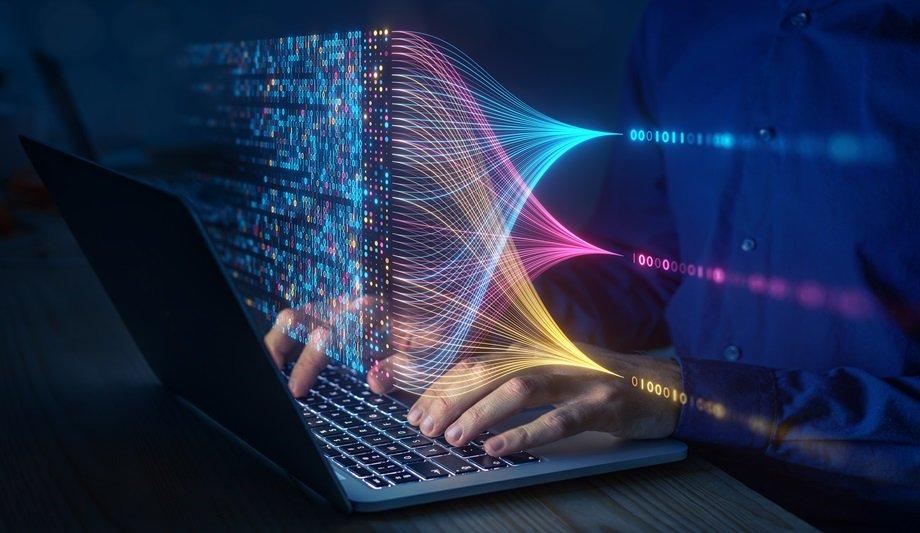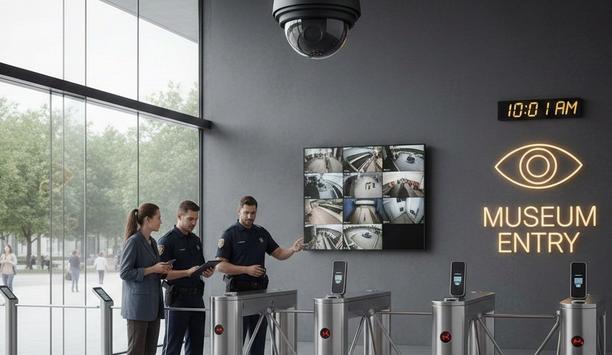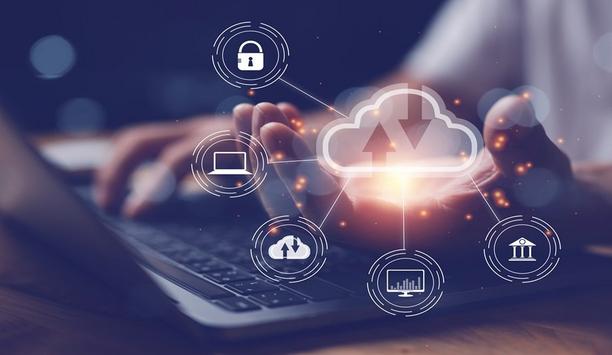Check Out Our Special Report On Casino Security
How Are Data Analytics Changing The Course Of Security?
Editor Introduction
For many years, security systems produced their share of "data exhaust." Every access control action and each video image became a data point to be stored in perpetuity, with no practical way to use the data. More recently, systems have been developed to enable organizations to analyze data from sensors and other connected devices to gain valuable insights into how their systems are being used, to identify potential vulnerabilities; and even to provide insights into broader enterprise operations. We asked this week’s Expert Panel Roundtable: How are data analytics changing the course of the security marketplace?
Security organisations are sitting on a goldmine of data collected by surveillance cameras, video management systems (VMS), and other connected physical security devices. With the rise of data analytics, physical security system data can be used as more than just a tool to respond to crime or a necessary expense to keep assets and people safe. It can become a core element in the digital transformation of organisational processes. Analytics can turn physical security data into smart, actionable insights that improve operations, efficiency, revenue generation, the customer experience, and more. A unified, open physical security platform helps organisations tap into the full potential of devices and equipment they already own, using data in new ways to streamline operations. While analytics help filter unstructured data into pertinent events, the platform helps operators leverage those insights to resolve immediate issues. And it brings teams across the organisation together on a common toolset, using a common language, to make improvements to the things they do every day.
From an IP video perspective, the data has always been there; it is only within the past few years that the security space has begun to use this data to create more efficiencies and predictors. We know that many end users’ systems have grown in size, and employing the operators necessary to watch and respond in real-time to these real-life events has been costly. Usher in the use of real-time AI, and now even end users with small and large systems can see and respond to these events in real-time. They can also review reports of these events to allow for more efficient responses regarding future events. Over time, AI technology has become more accurate and usable. AI has allowed manufacturers to create tools that enable our end-user customers to be more efficient and provide a solution for them to reduce their liabilities.
A camera system on its own offers users the ability to have eyes at every location where a camera is installed. However, it still requires a person to actually view the footage in order to take the appropriate action. Selling a camera system along with analytics helps unlock value from the camera system investment by offering an efficient means of uncovering information. For example, a camera system offered with a health monitoring solution that can identify camera view problems such as tilted or blocked cameras gives users peace of mind that the video evidence they expect to be there after an incident will be of the highest quality. Without such software, users would need to establish a programme to regularly check the camera system to ensure it is working as intended. This is a time- and cost-intensive process to do without automation.
Modern AI cameras can record a wealth of metadata regarding the objects they recognise. These attributes can then be fed into an analytics engine to find people or vehicles of interest or alert us when people or vehicles with certain characteristics exhibit a type of behavior. Beyond security, this data can also show how many people have entered an area or how long they paused next to a certain display. This can be used to construct a “heat map” that retail operations can use to uncover which products are attracting attention. Sophisticated analytics like AI Scene Change Detection can go further and alert an organisation when stock is running low. Organisations large and small are hungry for data/metrics that show how the business is performing. Security cameras can easily do “double duty” by protecting assets and employees while simultaneously providing data that reveal opportunities and trends that can directly benefit a company’s bottom line.
Data analytics have played an important role in making security more proactive versus reactive, as analytics have greatly expanded the capabilities of traditional surveillance devices such as cameras, intercoms, access control solutions, and more. Leveraging and integrating data collected by video, audio, and other surveillance technologies, analytics not only allow security teams to make faster decisions based on real-time outputs but also provide improved access to actionable insights that can then be used to make key business decisions, allowing the security marketplace to provide increased value across the enterprise. Edge analytics, in which data is both collected and analysed via the device itself, are especially adaptable and scalable, allowing security organisations to offer solutions that are more cost-effective and straightforward to implement. As data analytics continue to evolve, so too will the overall security marketplace.
Data analytics serves as an essential resource for Chief Information Security Officers (CISOs). It can automatically evaluate the effectiveness of security controls that relate to distinct risks. Assessments give feedback in real time, which allows for swift adjustments to these controls. Data analytics also enable anomaly detection, which issues alerts when metrics deviate in a meaningful way from usual patterns, thereby aiding in risk management. Further, predictive analytics analyse historical data to foresee potential future security incidents, helping CISOs take action in advance. Data analytics also contribute to enhanced situational awareness. They aggregate information from a variety of network sources, which assists in the strategic allocation of resources. However, the expertise of a CISO remains vital for interpreting data in its proper context and making informed decisions. In summary, data analytics is transforming the methods CISOs use to manage cybersecurity risks. It is making their strategies more effective and adaptable.
Today’s cybersecurity solutions feature analytics for software, hardware, and the cloud. However, applying analytics has changed significantly over time. Previously, analytics were used in a very reactive way to detect patterns in east-west traffic to shorten dwell time after a breach occurs. But as analytics platforms improve and draw upon more data, they’re increasingly being used in a more predictive and proactive manner, including analysing incoming and outgoing traffic to ensure threats can’t gain access to the network in the first place. Compared to individual solutions, purpose-built security analytics platforms can provide increased visibility into an organisation’s network, endpoint, and cloud traffic. This offers unprecedented amounts of contextual information on potential threats and how to mitigate them, allowing organisations and their security teams to get a much richer understanding of what’s happening with particular locations or sets of users.
Editor Summary
As our Expert Panelists point out, analytics can turn physical security (and cybersecurity) data into smart, actionable insights that improve operations, efficiency, revenue generation, and the customer experience, among other benefits. The use of analytics is enabling security practitioners to shift from a reactive to a proactive stance, in some cases identifying problems at an early stage and contributing to the company’s bottom line.
- Related companies
- Axis Communications
- Genetec, Inc.
- Salient Systems
- Ai-RGUS
- i-PRO
- Bell
- Hyperproof
- Related links
- Axis Communications Video Surveillance software
- Axis Communications Intercom Systems
- Genetec Video Surveillance software
- Salient Systems Video Surveillance software
- Axis Communications IP cameras
- Genetec IP cameras
- i-PRO IP cameras
- Card Access control cards/ tags/ fobs
- Infrared IP cameras
- Audio Only Intercom Systems
- IP54 Intercom Systems
- Magnetic Stripe Access control cards/ tags/ fobs
- Desk Mount Intercom Systems
- ANPR Software Video Surveillance software
- Flush Mount Intercom Systems
- Control Software Video Surveillance software
- Keypad & Audio Intercom Systems
- Vandal Resistant Intercom Systems
- Water Resistant Intercom Systems
- Surface Mount Intercom Systems
- Fob Access control cards/ tags/ fobs
- Network IP cameras
- Video & Audio Intercom Systems
- Detection Software Video Surveillance software
- Proximity Access control cards/ tags/ fobs
- Wall Mount Intercom Systems
- Tag Access control cards/ tags/ fobs
- PTZ IP cameras
- Video, Keypad & Audio Intercom Systems
- Drawing Software Video Surveillance software
- Smart Card Access control cards/ tags/ fobs
- Weather Resistant Intercom Systems
- Thermal IP cameras
- IP Surveillance Software Video Surveillance software
- Management Software Video Surveillance software
- Recording Software Video Surveillance software
- Monitoring Software Video Surveillance software
- Surveillance Software Video Surveillance software
- Transmission Software Video Surveillance software
- 2023 security trends
- Related categories
- Intercom Systems
- Video Surveillance software
- IP cameras
- Access control cards/ tags/ fobs
- View all news from
- Axis Communications
- Genetec, Inc.
- Salient Systems
- Ai-RGUS
- i-PRO
- Bell
- Hyperproof
Expert commentary
Security beat
The Key To Unlocking K12 School Safety Grants
DownloadHoneywell GARD USB Threat Report 2024
DownloadPhysical Access Control
DownloadThe 2024 State Of Physical Access Trend Report
DownloadThe Security Challenges Of Data Centers
DownloadKentixONE – IoT Access And Monitoring For Data Centers
Climax Technology HSGW-Gen3 Modular Smart Security Gateway
Delta Scientific DSC50 ‘S’ Barrier: Portable, Crash-Rated Vehicle Mitigation Solution



























